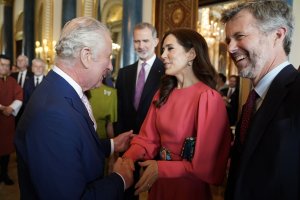Jan. 14 (UPI) — King Frederik X has taken the throne of Denmark after the abdication of his mother, Queen Margrethe II, the royal family shared on social media.
Margrethe, 83, had surprisingly announced on New Year’s Eve that she would retire from her role after more than a half-century on the throne. She is the longest-serving monarch in Danish history.
“For half a century, with our common heritage as a starting point, she has moved with the times,” Frederik said, speaking from the balcony of Christiansborg Palace in Copenhagen. “She will always be remembered as an extraordinary ruler. My mother has, like few others, managed to merge with her kingdom.” Frederik said he too hopes to be a “unifying” king.
Photographs posted online show Frederik, flanked by his Australian-born wife, speaking to a dense crowd in the palace square. Danish Prime Minister Mette Frederiksen officially proclaimed Frederik’s accession.
The royal family also released a new portrait of the king in his official uniform and unveiled his monogram, consisting of two inverted Fs, between which the Roman numeral X is placed, all crowned by the royal crown. It was drawn by Royal Armorial Painter Ronny Skov Andersen with digital assistance from artist Stefan Lægaard.
The process of replacing the monogram on official documents, guard uniforms and other capacities “is expected to take a long time.”
Margrethe will continue to receive the honorific of Her Majesty and could be installed as acting regent to perform duties of head of state if neither Frederick nor his son, the Crown Prince Christian, are able.
Denmark is a constitutional monarchy with the power of government resting with the country’s parliament. Frederick’s role is primarily ceremonial, though he has the responsibility of signing off on new laws that are passed which cannot take effect until his signature.
And while he could veto laws that are based, it would be unlikely to occur as it would mean going against the will of the people.
Frederik’s great-grandfather, King Christian X, tried to use his powers to oust the incumbent government in 1920 upon the end of World War I over a disagreement about the drawing of borders between Denmark and Germany. The incident became known as the Easter Crisis of 1920.
Since then, no Danish monarch has tried to majorly interfere with the politics of the country. Still, Danes are supportive of the monarchy and Frederik remains popular among his people.

COMMENTS
Please let us know if you're having issues with commenting.